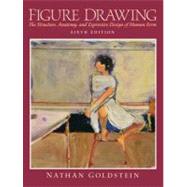
| Foreword | xi | ||||
| Preface | xiii | ||||
| 1 THE EVOLUTION OF INTENT: Major Factors and Concepts in Figure Drawing | 1 | (34) | |||
|
1 | (8) | |||
|
9 | (26) | |||
| 2 THE STRUCTURAL FACTOR: The Figure As a Structure | 35 | (44) | |||
|
35 | (7) | |||
|
42 | (3) | |||
|
45 | (4) | |||
|
49 | (3) | |||
|
52 | (3) | |||
|
55 | (5) | |||
|
60 | (5) | |||
|
65 | (10) | |||
|
75 | (4) | |||
| 3 THE ANATOMICAL FACTOR: Part One. The Skeleton | 79 | (42) | |||
|
79 | (1) | |||
|
80 | (3) | |||
|
83 | (2) | |||
|
85 | (1) | |||
|
86 | (3) | |||
|
89 | (2) | |||
|
91 | (7) | |||
|
98 | (3) | |||
|
101 | (4) | |||
|
105 | (8) | |||
|
113 | (8) | |||
| 4 THE ANATOMICAL FACTOR: Part Two. The Muscles | 121 | (74) | |||
|
121 | (1) | |||
|
122 | (2) | |||
|
124 | (5) | |||
|
129 | (3) | |||
|
132 | (9) | |||
|
141 | (10) | |||
|
151 | (18) | |||
|
169 | (1) | |||
|
169 | (21) | |||
|
190 | (5) | |||
| 5 THE DESIGN FACTOR: The Relational Content of Figure Drawing | 195 | (62) | |||
|
195 | (6) | |||
|
201 | (27) | |||
|
201 | (6) | |||
|
207 | (4) | |||
|
211 | (7) | |||
|
218 | (4) | |||
|
222 | (6) | |||
|
228 | (7) | |||
|
229 | (2) | |||
|
231 | (1) | |||
|
231 | (1) | |||
|
232 | (1) | |||
|
232 | (1) | |||
|
232 | (1) | |||
|
233 | (1) | |||
|
234 | (1) | |||
|
235 | (7) | |||
|
242 | (1) | |||
|
243 | (9) | |||
|
252 | (5) | |||
| 6 THE EXPRESSIVE FACTOR: The Emotive Content of Figure Drawing | 257 | (30) | |||
|
257 | (5) | |||
|
262 | (6) | |||
|
268 | (2) | |||
|
270 | (3) | |||
|
273 | (11) | |||
|
284 | (3) | |||
| 7 THE FACTORS INTERACTING: Some Examples | 287 | (38) | |||
|
287 | (23) | |||
|
310 | (1) | |||
|
310 | (3) | |||
|
313 | (1) | |||
|
314 | (1) | |||
|
315 | (2) | |||
|
317 | (8) | |||
| 8 A GALLERY OF VISUAL RESOURCES | 325 | (28) | |||
| GLOSSARY | 353 | (2) | |||
| BIBLIOGRAPHY | 355 | (2) | |||
| INDEX | 357 |
The New copy of this book will include any supplemental materials advertised. Please check the title of the book to determine if it should include any access cards, study guides, lab manuals, CDs, etc.
The Used, Rental and eBook copies of this book are not guaranteed to include any supplemental materials. Typically, only the book itself is included. This is true even if the title states it includes any access cards, study guides, lab manuals, CDs, etc.